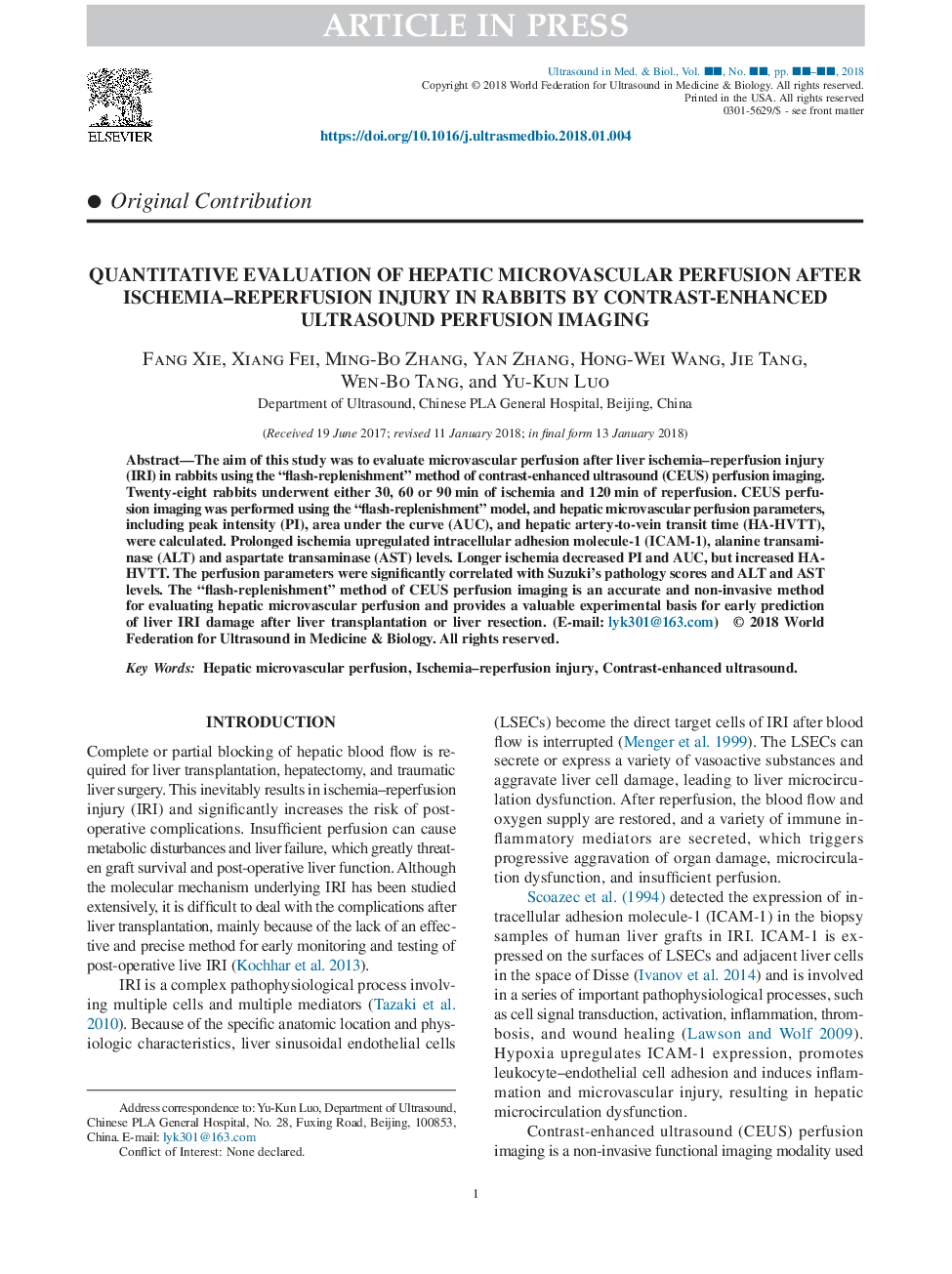| Article ID | Journal | Published Year | Pages | File Type |
|---|---|---|---|---|
| 8131191 | Ultrasound in Medicine & Biology | 2018 | 10 Pages |
Abstract
The aim of this study was to evaluate microvascular perfusion after liver ischemia-reperfusion injury (IRI) in rabbits using the “flash-replenishment” method of contrast-enhanced ultrasound (CEUS) perfusion imaging. Twenty-eight rabbits underwent either 30, 60 or 90âmin of ischemia and 120âmin of reperfusion. CEUS perfusion imaging was performed using the “flash-replenishment” model, and hepatic microvascular perfusion parameters, including peak intensity (PI), area under the curve (AUC), and hepatic artery-to-vein transit time (HA-HVTT), were calculated. Prolonged ischemia upregulated intracellular adhesion molecule-1 (ICAM-1), alanine transaminase (ALT) and aspartate transaminase (AST) levels. Longer ischemia decreased PI and AUC, but increased HA-HVTT. The perfusion parameters were significantly correlated with Suzuki's pathology scores and ALT and AST levels. The “flash-replenishment” method of CEUS perfusion imaging is an accurate and non-invasive method for evaluating hepatic microvascular perfusion and provides a valuable experimental basis for early prediction of liver IRI damage after liver transplantation or liver resection.
Related Topics
Physical Sciences and Engineering
Physics and Astronomy
Acoustics and Ultrasonics
Authors
Fang Xie, Xiang Fei, Ming-Bo Zhang, Yan Zhang, Hong-Wei Wang, Jie Tang, Wen-Bo Tang, Yu-Kun Luo,
